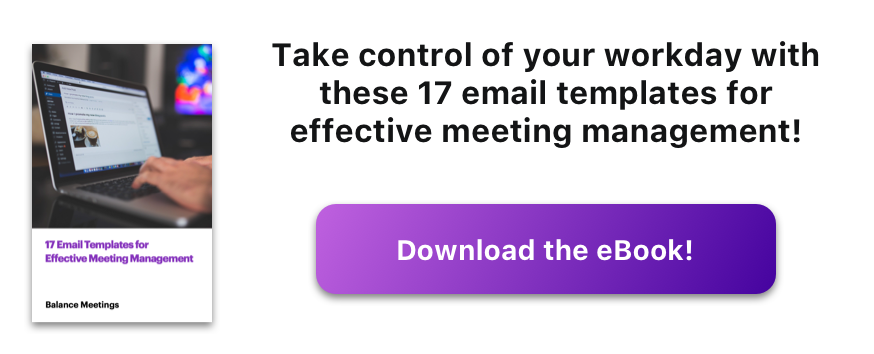When you track your behaviors at work using a meeting app, there is a lot you can do to control how you spend your time at work.
The 5 Minute Calendar Cleanup and other meeting tricks can help you reduce the number of wasteful meetings you attend, allowing you to attend the most important meetings and still have time to get your work done.
Regardless of whether you are an entry-level employee or a CEO, you have the power to at least look through your calendar to determine whether you need to attend every single meeting. Most of us can talk to our meeting leaders about skipping certain meetings occasionally.
However, you have much more power over how both you and your team attend meetings when you are the meeting leader.
Meeting Facilitation Begins Before the Meeting
Meeting facilitation skills are invaluable. Learning how to engage attendees, making sure their voices are heard, and helping lead the team to make high quality decisions during meetings, can help your attendees participate in more productive and effective meetings.
That said, most meeting facilitation techniques do not consider the importance of roles before the meeting begins.
In addition to establishing and sharing the meeting goals and agenda before each meeting, one of your most important responsibilities as a meeting leader is to carefully track who should be attending each meeting.
Getting the Right People in the Room
Each meeting you facilitate should:
- Have the right number of people
- Include contributions from all meeting attendees
- Limit the number of attendees who are multitasking
- Have a clear list of whose attendance is required, and whose is optional
The right number of people: Depending on your meeting time, the optimal number of attendees changes. The easiest rule of thumb to remember is the Rule of 7: For every attendee you add to a meeting over seven, decision effectiveness goes down by 10%.
We all want to be inclusive, but sometimes leaving someone off the invite list is more respectful and beneficial to them than inviting them to a meeting during which they will not play a critical role.
Meeting contributors: Sometimes we invite people to meetings for situational awareness. While this is great for new employees and interns, most meeting invitations should be limited to those who will actually contribute to the meeting. Otherwise, attendees are likely to start multitasking and will not take anything useful away from the meeting.
Limit multitasking: It is tough to control multitasking in meetings, especially via Zoom when you cannot quite tell what people are looking at on their screens.
There are two things you can do.
First, make sure you yourself are not multitasking.
When you multitask you enhance the likelihood that others in the meeting will also multitask, especially if you are in a position of leadership.
Second, if an attendee of a recurring meeting often multitasks and does not contribute, consider letting them know their attendance is optional for future meetings, and let them know you can catch them up offline instead.
Required vs. optional attendees: It can be challenging to keep some meetings small, especially when you have a team meeting and your team has more than seven people. For each meeting, use the required and optional lines of the invitation carefully.
Many people do not look at whether they are listed as required or optional for meetings, so be sure to let invitees know your expectations from them via some other method (e.g., email, chat).
Key Takeaway
You have control over more than just your own time when you are a meeting leader.
Each article in the “Learn” section of the Balance Meetings app has a “Pro Tips for Meeting Leaders” section that you can use to help you and your team have more effective meetings.

